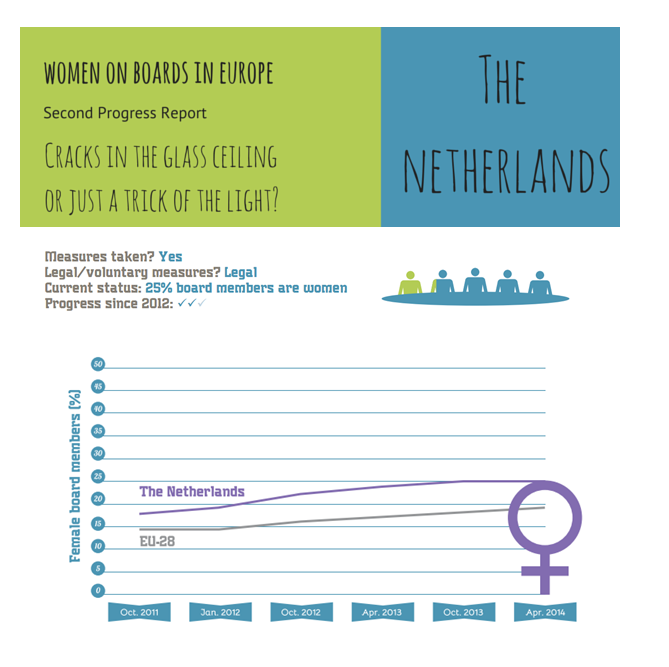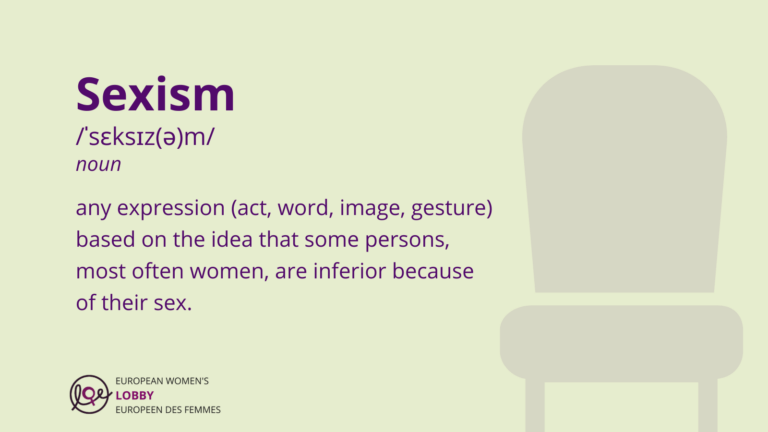What is this report about?
As part of the European Women’s Lobby’s Beijing+20 focus month on ‘Women in Decision-Making’, February sees the launch of the EWL’s latest report on women on boards, entitled ‘Women on Boards in Europe: Second Progress Report. Cracks in the glass ceiling or just a trick of the light?’
This Second Progress Report is part of the EWL’s ongoing work to ensure that parity at all levels of decision-making becomes reality. It tracks developments, progress, and stagnation regarding women on company boards in 11 European countries, including the Netherlands, since the EWL’s first Progress Report on Women on Boards in 2012 – which was awarded the European Public Affairs Award for Report of the Year 2012.
What’s happening in Europe regarding women on boards?
Since the 2012 report, and ongoing campaigning in favour of binding legislation regarding gender parity on company boards across the EU, an EU Directive which aims to attain a 40% gender balance on non-executive boards in large, publicly listed companies across the EU has been proposed and is currently under consideration by the Council. Commissioner for Gender Equality Věra Jourová has committed to seeing the Directive passed within 2015.
We therefore find ourselves at a key moment to reflect on the developments in this area since 2012 across Europe and to learn from this reflection and analysis in order to best inform current and future policy-making in this area.
What have the Netherlands done to crack the glass ceiling since 2012?
Positive steps
- Following the 2011 Dutch law which came into practice in 2013, and which establishes a target of 30% female seats on both executive and non-executive boards, there has been progress in the overall representation of women at these levels, in both the EC data and wider national data
- It is unusual for a legal target to actively take into account both executive and non-executive positions – usually progress is concentrated in non-executive positions
Challenges
- The legislation is temporary and will cease to exist from 1 January 2016 but there is still a long way to go to reach the 30% target, particularly when we look at female representation on executive boards. In both the narrower EC data and the wider national data, just 6% of executive board positions are filled by women
- The law does not include any sanctions for companies which do not comply; those who fall short of these targets merely have to explain in their annual report why they have not met them, what they have tried to do and what they will do differently in the future
- 34% of the 87 companies analysed by wider national data do not have a single female director, executive or non-executive
The way forward
The report makes five evidence-based recommendations, which should be taken into account as the future policy landscape regarding women in decision-making at the EU level and the national level is determined:
- Binding measures must apply to both executive and non-executive boards
- Further action is needed to increase proportion of female CEOs
- Effective measures require regular monitoring and intermediary targets
- Measures must be enforced with firm sanctions
- Quotas must be introduced as part of a comprehensive policy package that seeks to address the fundamental causes of women’s underrepresentation in economic decision-making
Gender parity in positions of economic power is of vital importance when it comes to justice, democracy and sustainable growth. Diverse decision-makers and leaders better represent, better understand, and better respond to the desires and needs of women and men in their diversity – and will be more open to cultivating a new style of leadership which will lead to much-needed transformative social change. As an important step forward towards a progressive, sustainable and inclusive Europe, the European Women’s Lobby demands the adoption and implementation of the current proposed EU Directive on women on boards without further delay. Moreover, we strongly encourage national governments to go above and beyond its requirements and to implement stronger measures to achieve gender parity at all levels of decision-making.
Sources: M Lückerath (2014) The Dutch Female Board Index 2014



